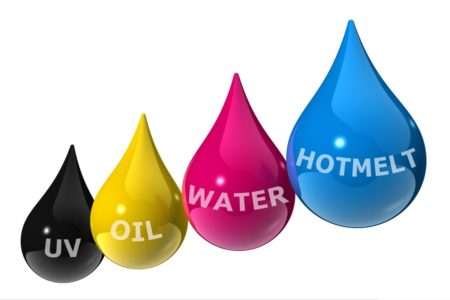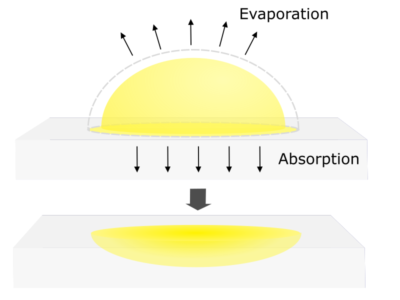 This is the first post in a series by Mark Bale discussing the topic of inks. We will talk in depth about water-based inks that dominate the industry, but first we are going to explain a little about chemistry and colorant options available in the production print market. Our aim is to give a non-exhaustive insight in to material differences and how they impact print quality and color.
This is the first post in a series by Mark Bale discussing the topic of inks. We will talk in depth about water-based inks that dominate the industry, but first we are going to explain a little about chemistry and colorant options available in the production print market. Our aim is to give a non-exhaustive insight in to material differences and how they impact print quality and color.
What are the choices?
There are four main competing ink types, aqueous, oil, hotmelt and UV-cured; with each being marketed as the ones that give the best color, speed or substrate tolerance.

Regardless of ink type, one of the most important choices to be made is the colorant; whether you have either pigment or dye can make a big difference. Simply put, dyes dissolves in the ink base, whilst pigments stay as solid particles. As a result, dye is cheaper to make and incorporate into the ink and is therefore often found in lower-price inks. Pigment offers generally superior water resistance and UV fade resistance and so it is by far the most dominant choice these days. From a sustainability perspective, it is easier to recycle.

On the negative side, pigmented inks generally cost more per pound because those solid particles need to be dispersed somehow to keep them stable in the mixture, usually by milling. In fact, pigment dispersion technology is the key to a good inkjet ink, since it influences the color capability as well as the overall performance in the system. The manufacturing process for each ink type will be optimized differently because of the other ingredients present and the effect they have on the pigment.
The other main difference between our ink types is whether the recipes have any substantial volatile content. A lot of the key performance differences are based on how the carrier solvent absorb and/or evaporate as shown in the schematic below. Oil and water-based inks rely on these mechanisms, whilst the UV and hotmelt inks convert much more quickly from liquid to solid, thus reducing effects like ink bleed as well as paper deformation. Of course, since they do not lose any volume, the UV / hotmelt options inevitable give thicker film and can result in a different feel of the printed product.

Now you have a general idea on the different types and colorants used, we will further the discussion in our next post, Inkjet Ink – Carrier Matters, to highlight the carriers used within each ink option.
Mark Bale is the founder of DoDxAct Ltd in Somerset, United Kingdom where he consults in all aspects of inkjet R&D from ink formulation and manufacture through jetting & process integration to final application optimization in production inkjet, wide-format graphics, labels & packaging, decorative surfaces, photovoltaic manufacture and product coding.
